2. Housing Lynn
Harvard GSD
Urban Planning Core 2 Studio, Spring 2023
Critics: Brie Hensold, Stephen Gray, Dan D’Oca
Research Partners: Kanna Atarashi, Yvonne He, Steven Li, Isis Patterson, Jess Shakesprere
**Visuals completed independently

The city of Lynn, Massachusetts faces a mounting housing crisis. Situated in a prime coastal location with unique urban assets, including one of the largest urban parks in the country, public beaches, and transit connections to Boston, the city is proving an attractive alternative to high-cost neighborhoods further south. Recent multifamily housing development in the city has prioritized luxury apartments geared primarily towards commuters and young professionals leaving Boston. In contrast to many communities further up the North Shore, though, Lynn is a predominantly immigrant and non-white community. With a median income that sits at about eighty percent of AMI, even conventionally subsidized affordable housing often falls short of meeting Lynners' needs. Sixty percent of residents identified affordable housing as the city's most pressing issue.
Housing Submarkets, Zoning, and Demographics:





The first part of this undertaking consisted of extensive research on demographics and present conditions in Lynn's housing landscape. Much of the city's lower-income, foreign-born population is concentrated around the downtown area, with higher-income, predominantly white Lynners tending to live in the areas surrounding Lynn Woods. The latter neighborhoods are zoned exclusively for single-family homes, while downtown accommodates much of the area's lower-cost housing stock. Issues such as overcrowding and physical deterioration continue to present major challenges for families, including those who come to Lynn because of its status as a 'Gateway City' for refugees and new arrivals.
Concentration of Recent Housing Development:
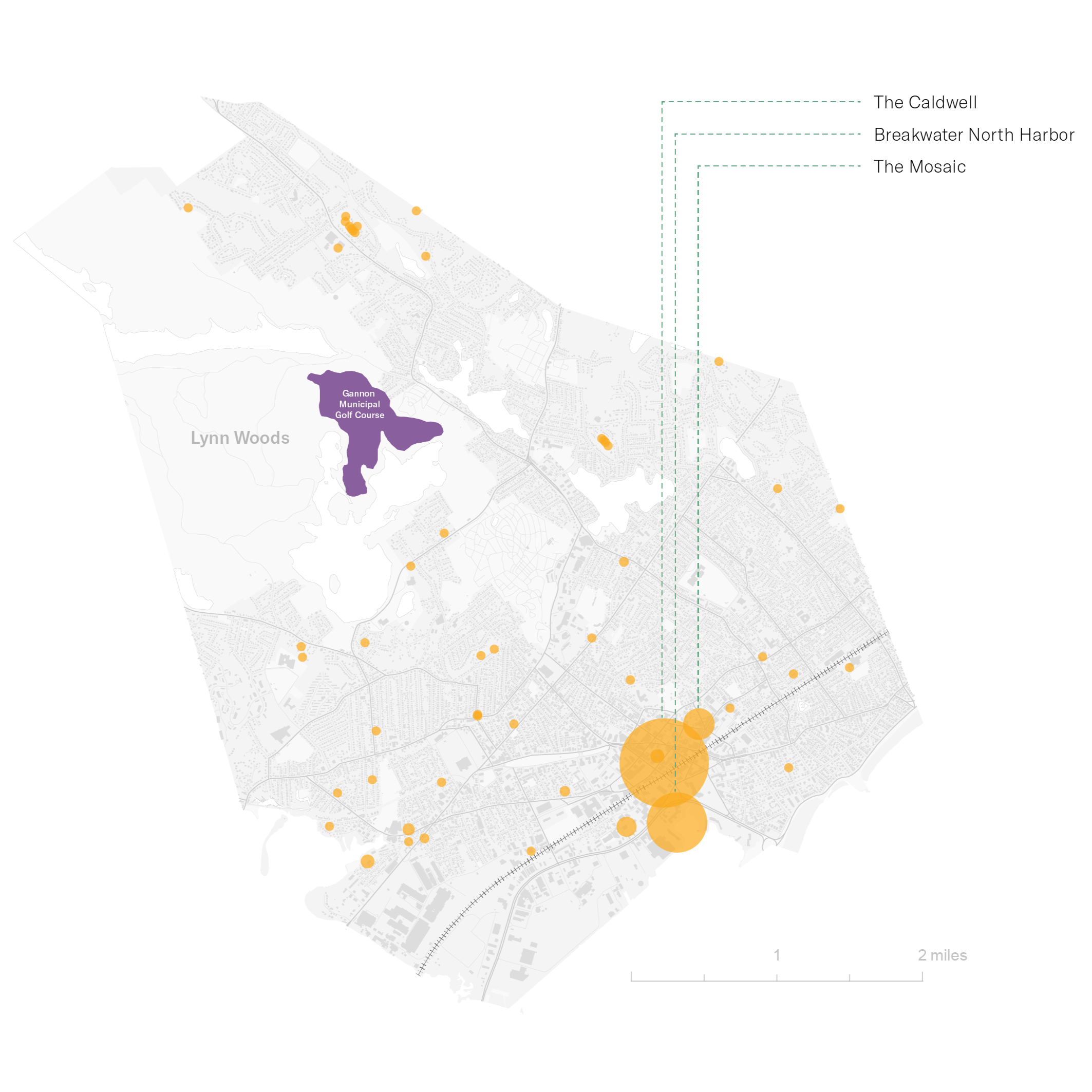
This research, visualized through mapping, culminated in the drafting of three RFPs, which called for (1) the development of mixed-income housing on municipal parking lots downtown, (2) the development of permanent supportive housing with wraparound services on infill sites owned by the Lynn Housing Authority and Neighborhood Development (LHAND), and (3) the development of mixed-income multifamily ownership housing on a portion of Gannon Municipal Golf Course.
The second part of the project consisted of a response to the first of the three RFPs, through which we fleshed out our site analysis and a basic housing scheme for one of the municipal parking lots. We relied heavily on data presented in the Vision Lynn initial comprehensive planning documents, the Lynn housing report, and results from our own extensive engagement activities with residents, business owners, and government officials to frame three central objectives: (1) provide affordable housing units (2) contribute to the commercial vitality of downtown, and (3) add critical indoor and outdoor community spaces to the neighborhood.
RFP 1: Mixed-Income Housing on Municipal Parking Lots








Drawings, renderings, and a preliminary financing model frame the case for two different approaches to the site, one of which is more "business as usual" for Lynn and the other of which presents a bolder statement on the future of Lynn's housing landscape. The first proposal consists of two individual buildings designed around a central public courtyard and constructed through traditional "5-over-1" methods. The single-story podium hosts parking for some residents, retail spaces, and a childcare center. In the second scheme, a two-story podium supports a stepped residential structure that rises to ten stories total, keeping the building height within zoning limitations. Variances for floor area ratio and parking minimums would likely be granted by city officials.
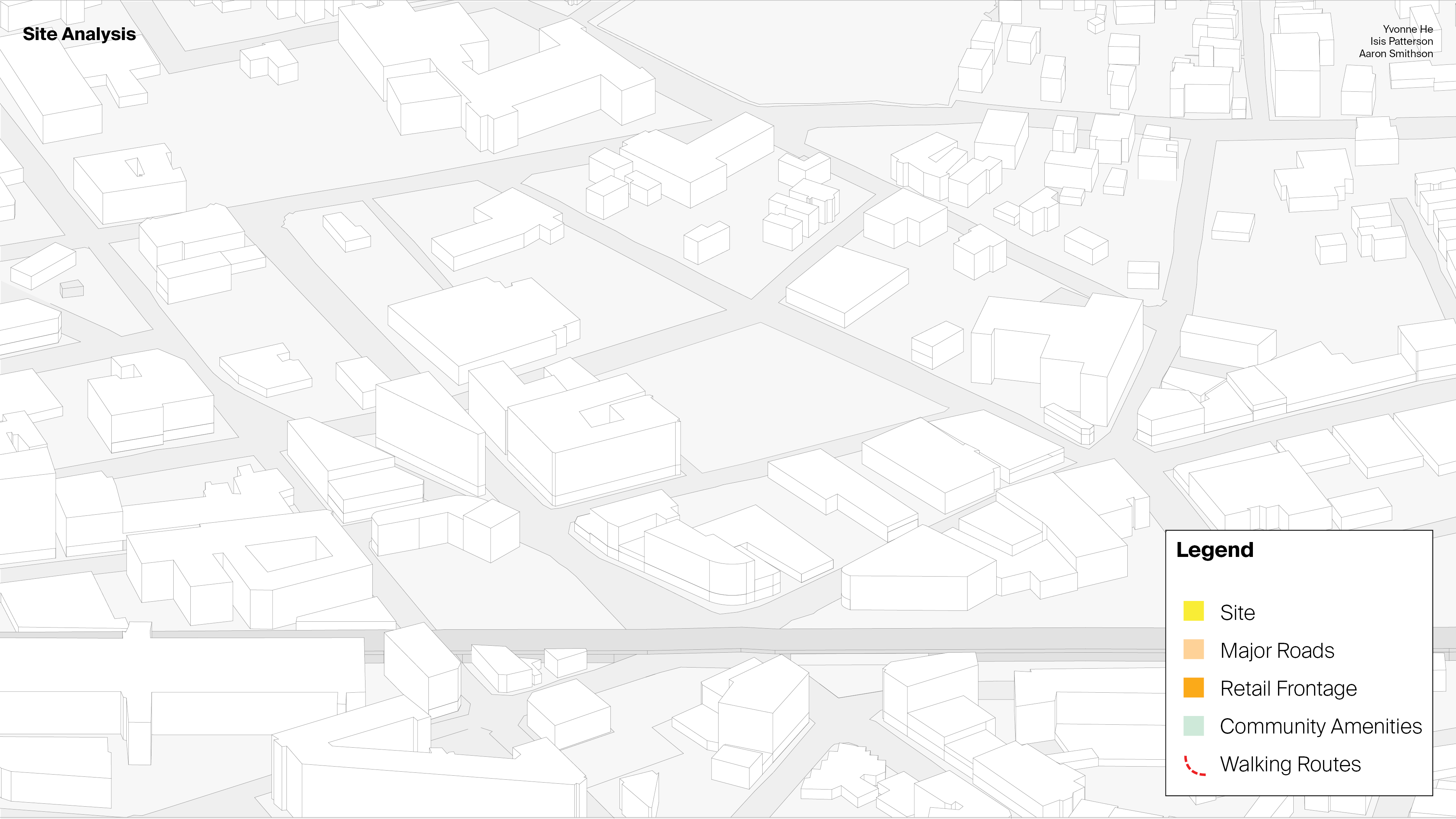


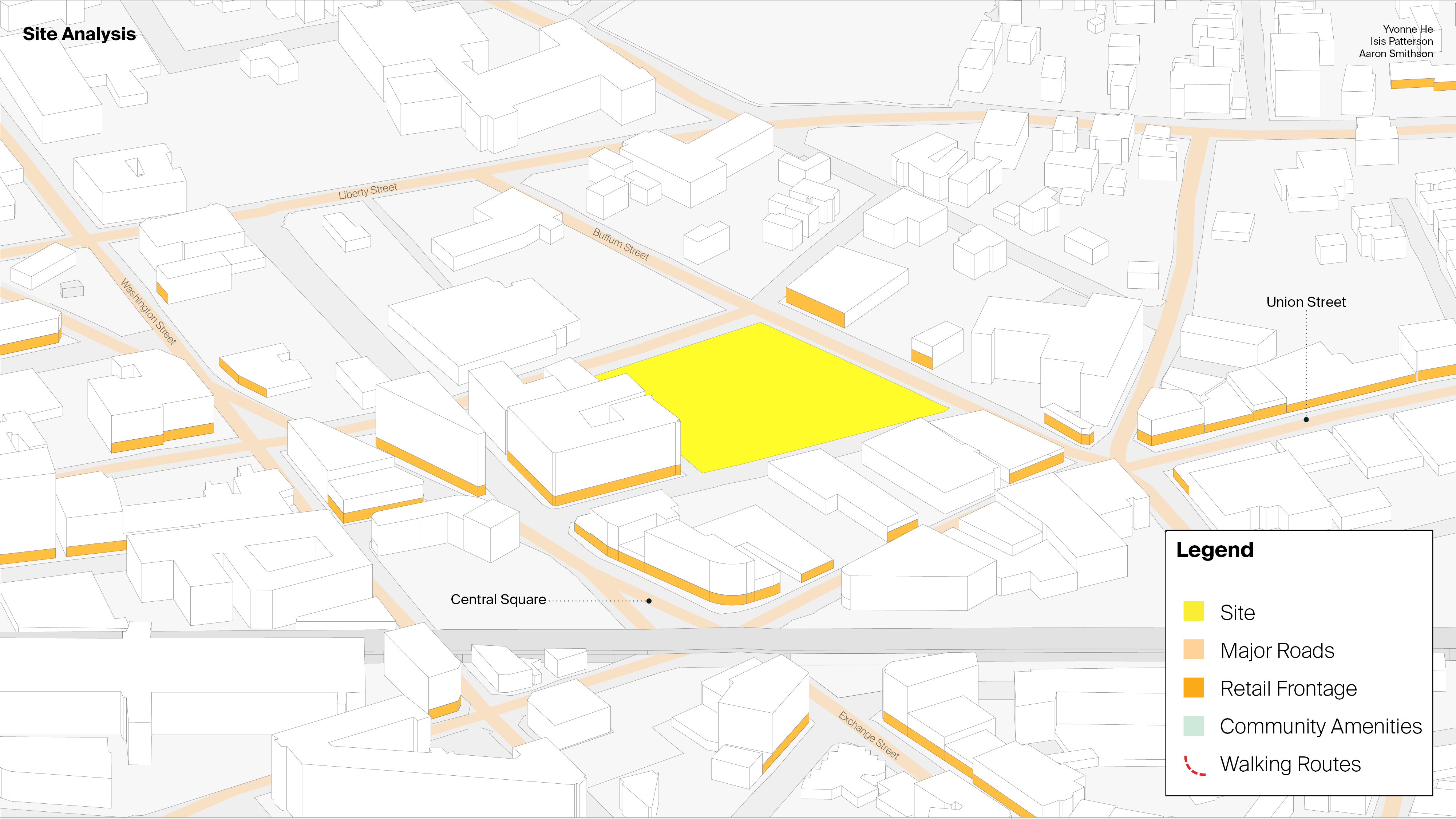


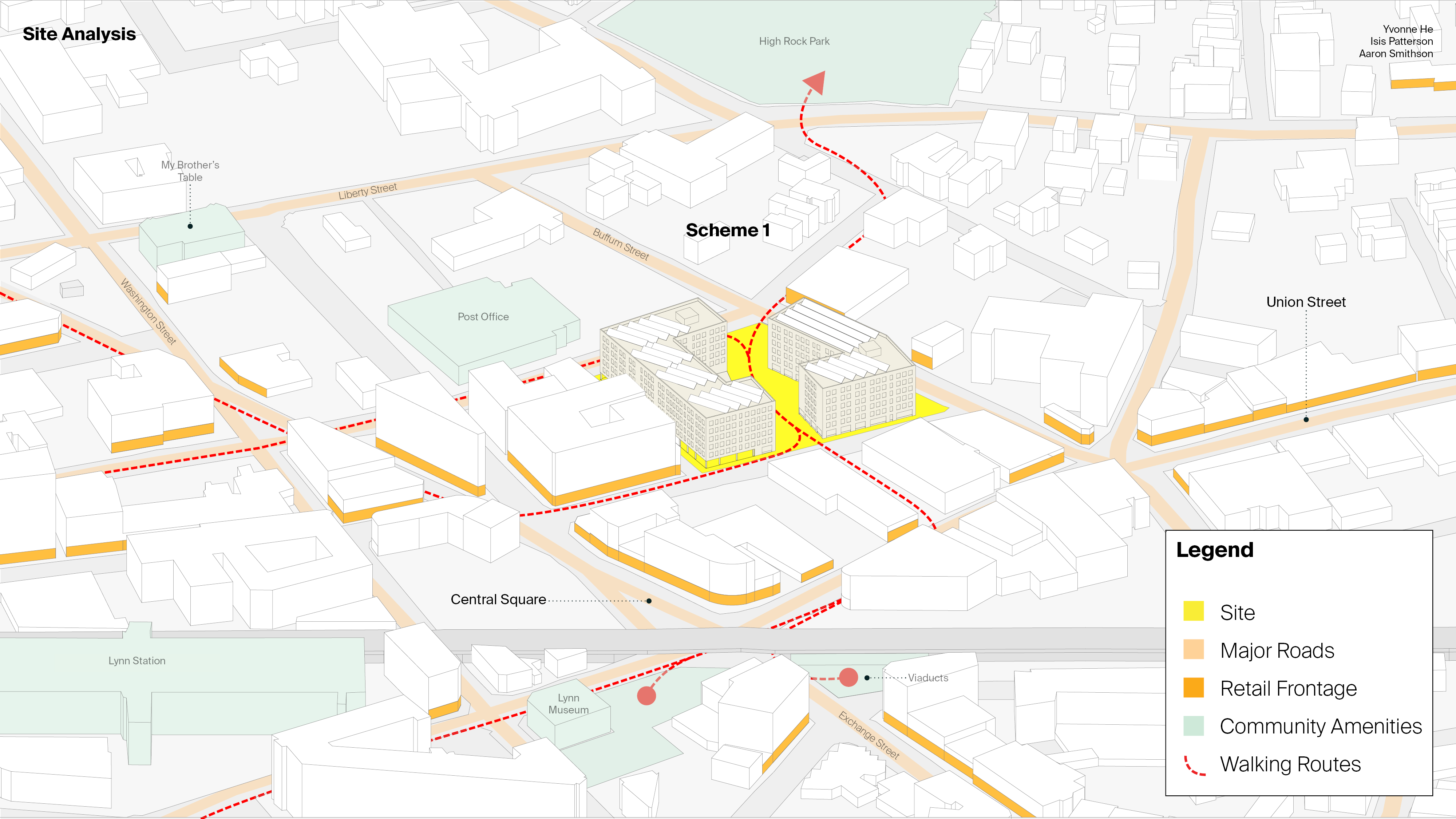



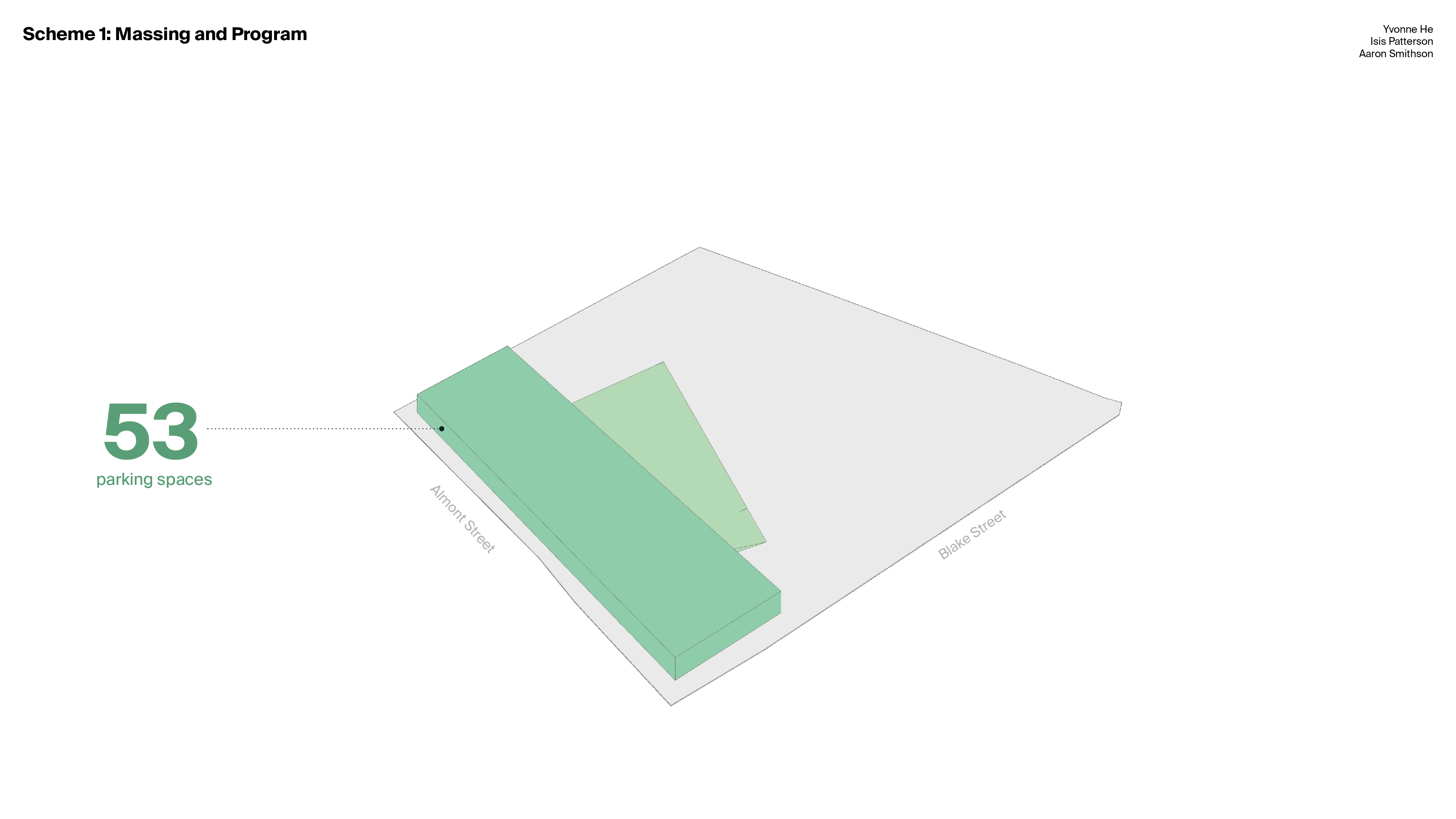










While neither design is fully developed, renderings demonstrate how the development could be used as an economic catalyst for the neighborhood, enabling more Lynners of modest means to remain in the city while tying various retail and service spaces to the commercial corridors in nearby Central Square and along Union Street. In a further iteration, a one-block stretch of the quiet street in front of the site could be closed to regular vehicular traffic and reprogrammed as a pedestrian plaza with minimal disruption to surrounding traffic. A nearby alleyway currently used for van storage could funnel users from busy Union Street to the site, where street performances, farmers' markets, and food truck events might take place.






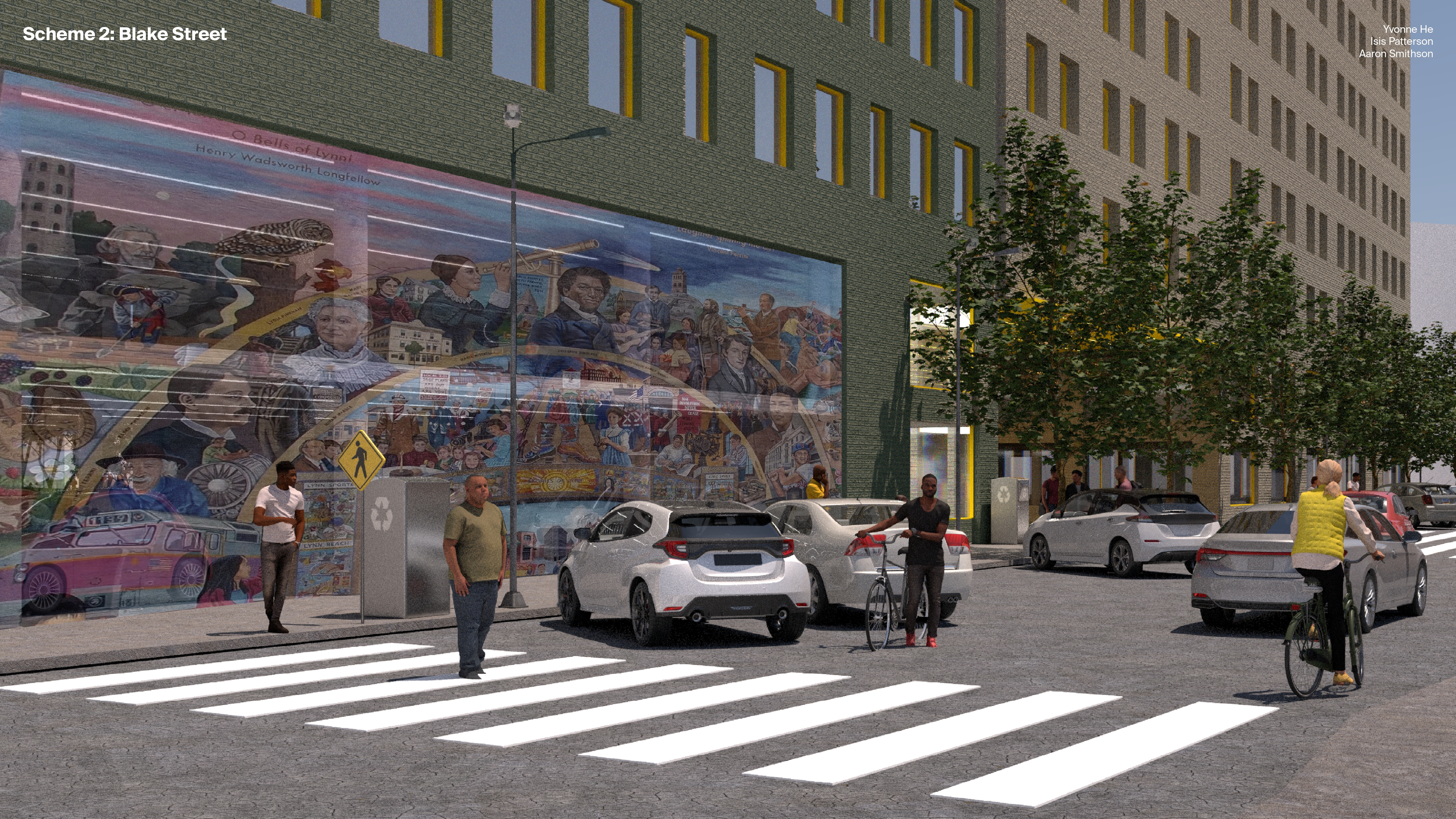


Lynn is a city with incomparable assets, most notably its racially, culturally, and linguistically diverse community. The ways in which the City responds to current housing trends and development pressures will shape the lives of Lynners for generations, making ambitious affordable housing preservation and production a critical focus.